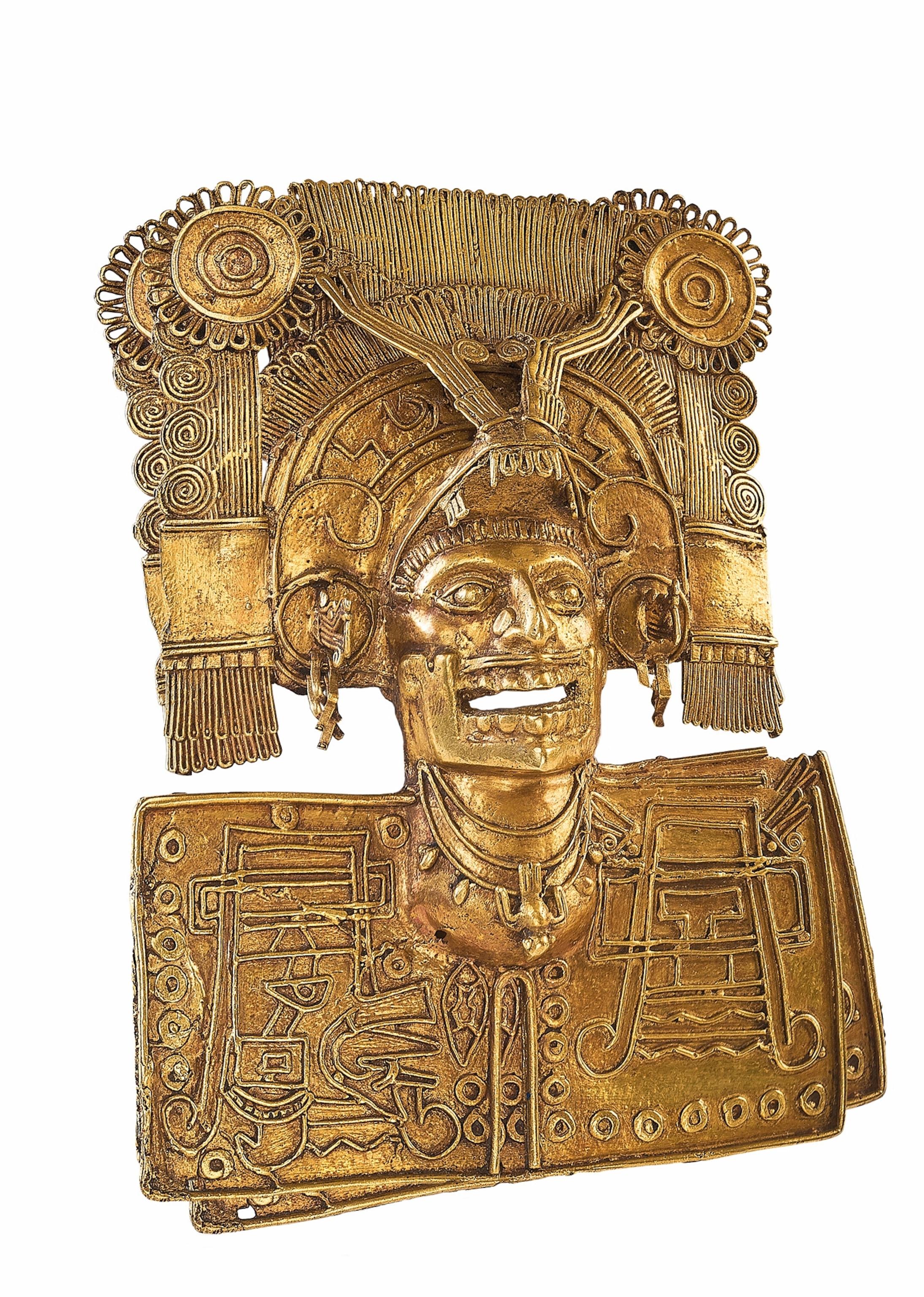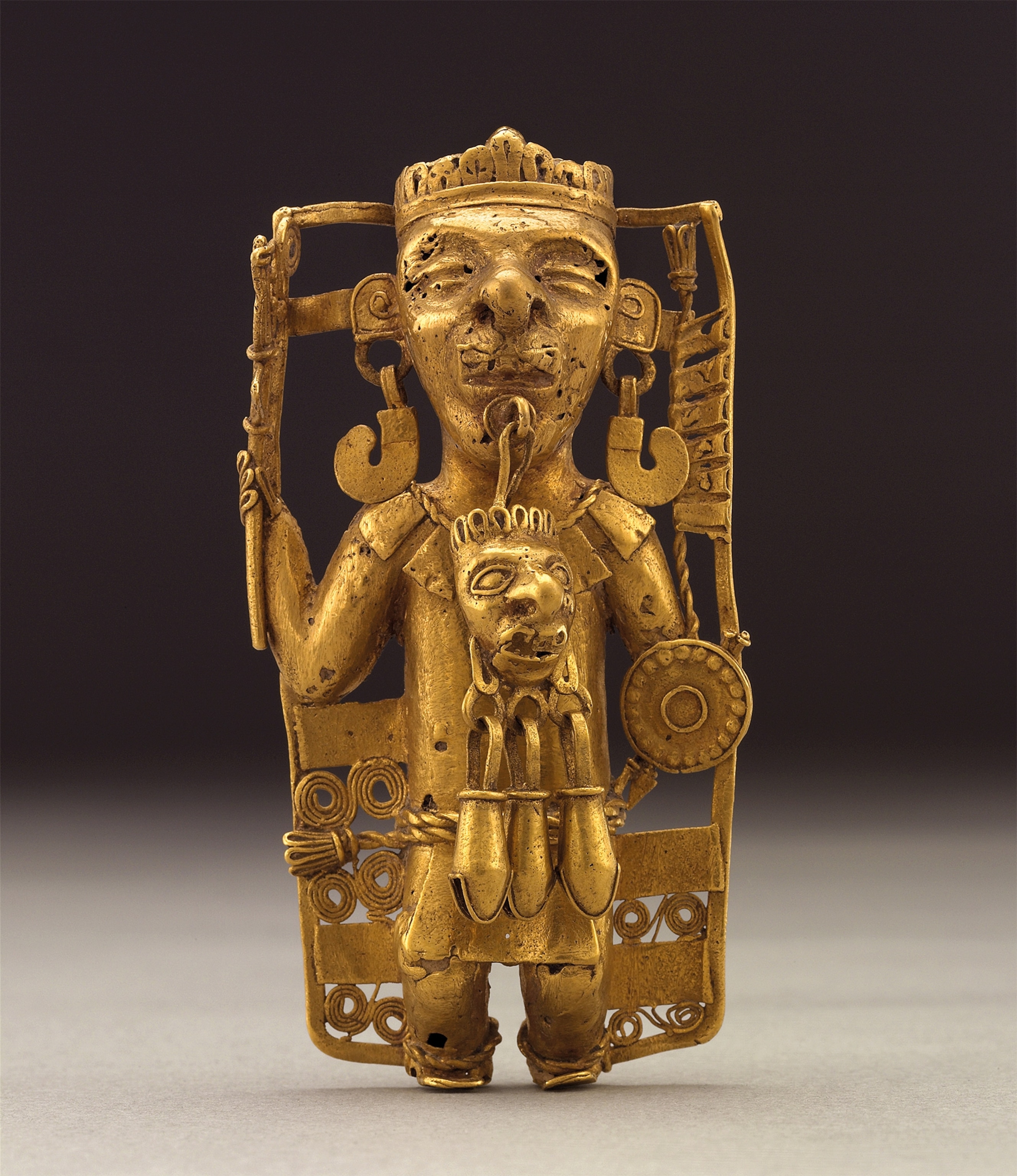Who wore the golden pectoral of Monte Albán?
This Mixtec masterpiece was one of more than 120 gold artifacts discovered in a tomb in southern Mexico. Its complex iconography has led to heated debate over the identity of its owner.

A stunning golden pectoral, designed to be worn around the neck of a Mixtec dignitary, was one of over 120 gold pieces found in a tomb in southern Mexico’s ancient city of Monte Albán. Rich in symbolism and iconography, the figure’s visual complexity has led to several different interpretations of its meaning and the identity of its subject.
Discovery in Oaxaca
The rich pre-Columbian past of Mexico’s state of Oaxaca was largely hidden until archaeologist Alfonso Caso began his work there in 1930. Focusing on the ancient mountaintop city of Monte Albán, Caso determined that the site had served as the capital of the Zapotec empire for more than 1,000 years, but by the year 700 it had fallen into decline.
The Zapotec abandoned the city, and their successors, the Mixtec, came to power by 900. They would rule until 1521, after which date the Spanish extended their conquest of the region.
(Discover National Geographic’s latest travel stories about Mexico.)
During their occupation, the Mixtec reused Monte Albán’s Zapotec structures, including royal tombs. Caso uncovered 20 buildings and 176 tombs at the site. In 1932, after tunneling through a wall of an elite residence, he discovered Tomb 7, considered by many to be the most spectacular find ever made in Mesoamerica.
The tomb dates to about 1330. It contained more than 500 objects, including more than 120 gold ornaments, whose craftsmanship revealed the Mixtec as the most skilled goldsmiths of central and southern Mexico. They excelled in “lost-wax” casting, producing ornamental objects such as pectorals (chest ornaments hung from the neck), pendants, necklaces, and other items.
One of his most stunning finds was a formidable golden pectoral, which Caso described as “[p]erhaps the most beautiful Mexican gold figure we know of.” Dazzling to behold, the pectoral also contains important information about Mixtec culture and the complex symbolic language in their art.
(This is the world's rarest form of gold. New clues are revealing why.)

Questions of identity
The Mixtec codices, another major discovery of Caso’s from Monte Albán, have provided important context for the pectoral and for determining whom it might depict. Written on deerskin, the codices narrate the Mixtec origin myths and complicated genealogy of their rulers, priests, and warriors. Along with the Maya dynastic record, they provide the only known documentary history of the pre-Columbian New World.
Caso’s studies of the Mixtec calendar systems allowed him to interpret the artwork on the pectoral’s shoulders. He concluded that each piece corresponded to different calendars, that could be cross-referenced with calendar reform in the codices. Using this information, Caso believed the pectoral to depict a ruler known as Lord 5 Lizard. (A person’s name and number is set by their date of birth in the Mixtec calendar.)
Dazzling to behold, the pectoral also contains important information about Mixtec culture and the complex symbolic language in their art.
Some scholars such as Geoffrey McCafferty, professor emeritus of archaeology at the University of Calgary, have different interpretations. He believes the pectoral depicts Lady 3 Flint because the serpent headdress is the same one she wears in one of the codices, which leads him to think the pectoral was worn by her descendant known as Lady 4 Rabbit, who “would have worn it as an heirloom to legitimize her ancestry.”
Today the pectoral and other treasures from Tomb 7 of Monte Albán are housed at the Museum of Cultures of Oaxaca, in Santo Domingo, Mexico.





